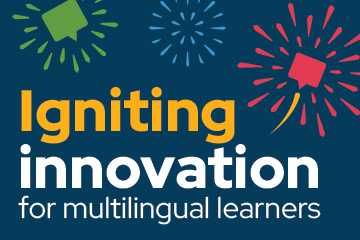Alternate ACCESS Scores and Reports

Resources to help educators understand student scores
WIDA provides sample score reports, guides for understanding them, rubrics to connect results with instructional and IEP plans, as well as other resources to engage with families about what it all means. Every year, individual states set their own testing and score reporting timelines. Visit your member/state page to learn when students will test and when you can expect score reports.
Types of Scores and How To Use Them
Types of Score Reports
All Alternate ACCESS score reports provide score information for the same eight categories: four domains and four composite areas (Oral Language, Literacy, Comprehension, Overall). Composite scores are created from two or more domain scores.
- Individual Student Report (ISR)
The ISRs show scores for an individual student. There are two Alternate ACCESS ISRs: One is for educators, and one is for families.
The ISR for families
- Is available in many languages. Find translations in WIDA AMS.
- Contains the critical information families need to know.
- Can be sent home with students and/or discussed at conferences with parents/guardians.
- Can assist when talking with families and students about scores.
The ISR for educators
- Is available in WIDA AMS
- Should be used when your focus is on one student at a time
- Can assist with collaborative decision making about instructional supports and reclassification
Sample Alternate ACCESS ISR for Families
Sample Alternate ACCESS ISR for Educators- Student Roster Report (SRR)
The SRR contains information about a group of students within a single school and grade. It does not have visual supports or descriptors of each level but provides a concise and holistic way to view the results for a group of students.
- Look for patterns in student performance
- Class placement
- Forming work groups in a class
- Identifying students who would benefit from different or additional support
- Frequency Reports
WIDA provides three frequency reports: school, district and state. They show the number and percentage of tested students (per grade) who scored at each proficiency level. Frequency reports do not show the performance of individual students, so they are best for providing a global overview of a larger group’s performance. Because the number of students taking Alternate ACCESS tends to be relatively small, take care when interpreting frequency reports.
- Use to gain a sense of the school, district, or state-wide effort towards educating ELLs
- Use when planning, developing, or restructuring language services for ELLs
- Be careful when generalizing about the meaning behind differing scores, especially with a small number of students
Sample Alternate ACCESS School Frequency Report
Sample Alternate ACCESS District Frequency Report
Sample Alternate ACCESS State Frequency Report
Types of Scores
Scale Scores take item difficulty into account so they can be used to examine groups of students, or student performances, over time. Scale scores on Alternate ACCESS range from 900-980.
Proficiency Level Scores provide an interpretation of scale scores. Alternate ACCESS proficiency level scores are whole numbers. Proficiency levels on Alternate ACCESS range from 1-5, and are unique from other ACCESS assessments. A student who scores a Proficiency Level 1 on Alternate ACCESS is not necessarily at the entering level on the ACCESS for ELLs Online and Paper assessments.
Understanding Alternate ACCESS Scores
The WIDA Alternate ACCESS Interpretive Guide for Score Reports is a comprehensive document explaining the types of scores reported by Alternate ACCESS for students in grades K-12.
Interpretive Guide for Score Reports
Using Alternate ACCESS Scores
Alternate ACCESS scores have many potential uses, from determining the placement of individual students to guiding instruction. Test scores should be just one element in the decision-making process to:
- Monitor student progress annually (using scores from two or more years) – scores from the first year taking Alternate ACCESS can establish a baseline to track future growth
- Guide IEP teams in determining English language acquisition supports
- Inform classroom instruction and assessment
- Aid in programmatic decision-making
Score Report Resources
Rely on the Alternate Proficiency Level Descriptors for explanations of how students use their English language at each proficiency level. Scroll to the end of the document for a section that defines terms and gives examples of student responses.
Share the revised WIDA Alternate ACCESS: Understanding Your Child’s Scores flyer, along with the appropriate ISR, with families. The flyer is available in 16 languages and helps families understand what scores mean and how they are used.
For 2023-24 only: The flyer has a second page that explains what is different about this year’s score report.
Watch the recording of the Understanding 2023-24 WIDA Alternate ACCESS Score Reports webinar (WIDA Secure Portal account required). Expect to learn how to make sense of new score levels and the redesigned Alternate ACCESS ISRs.




